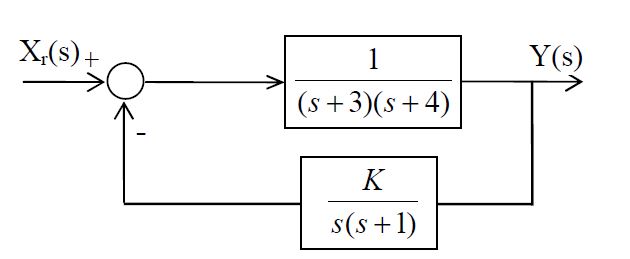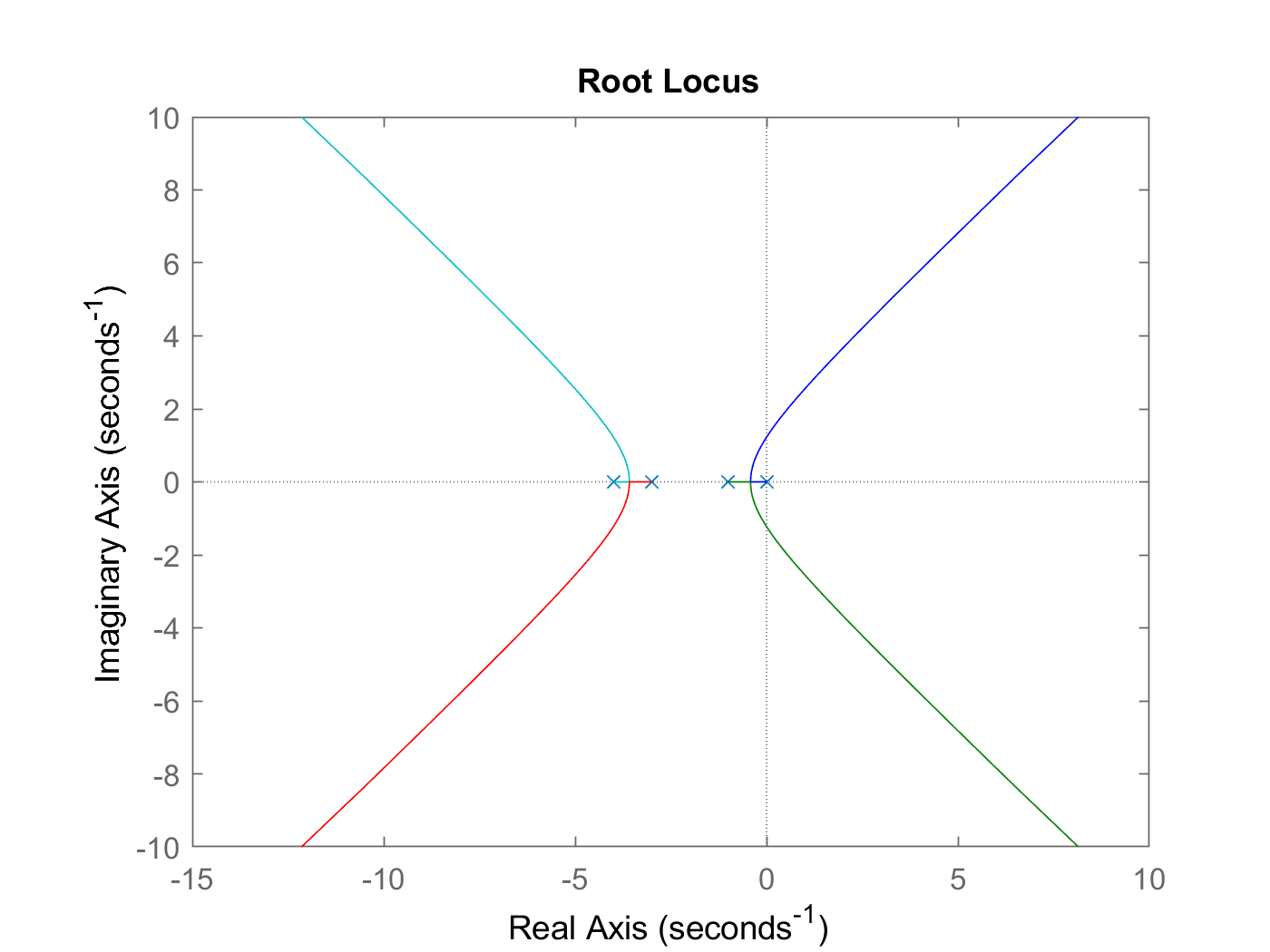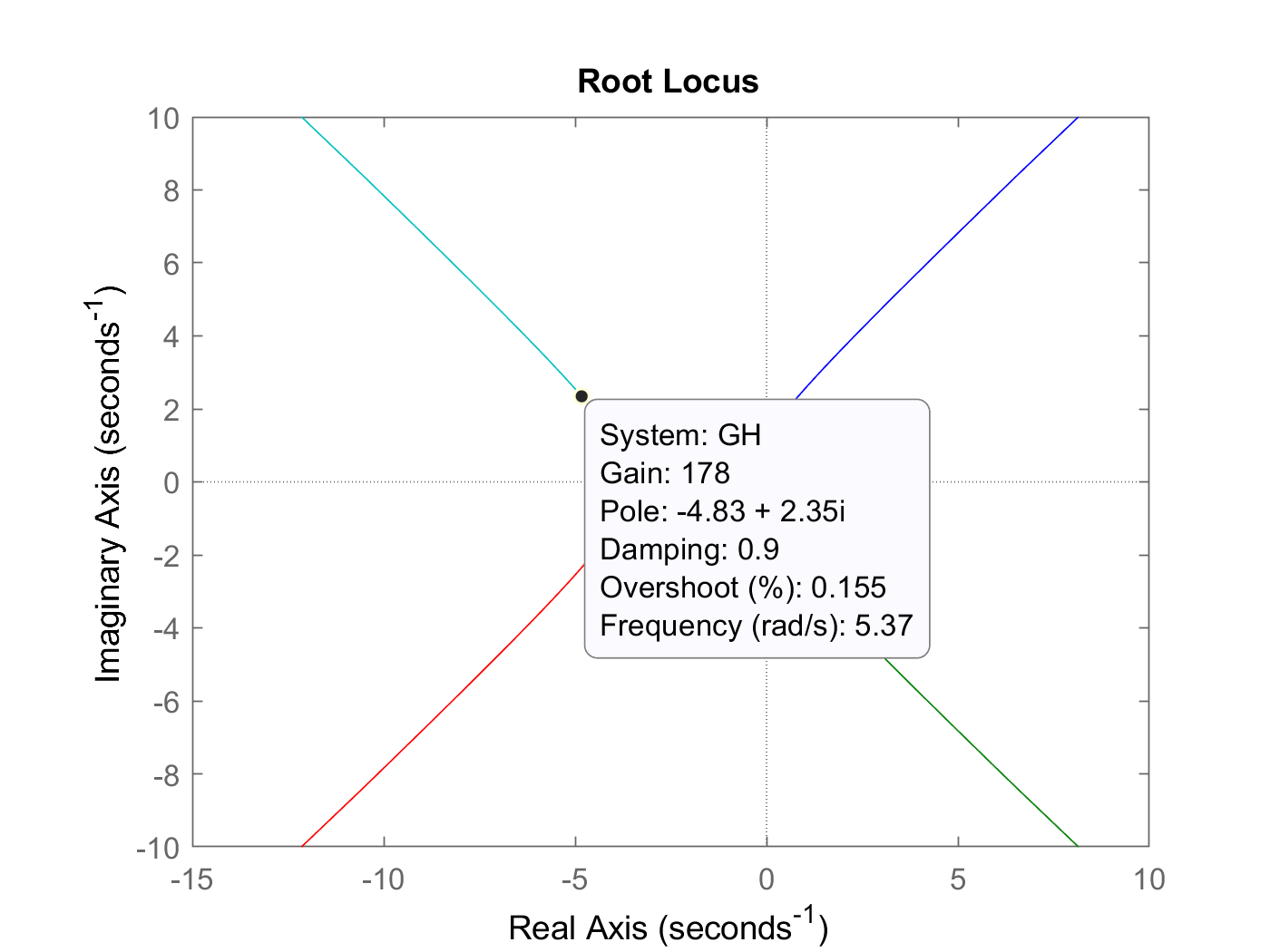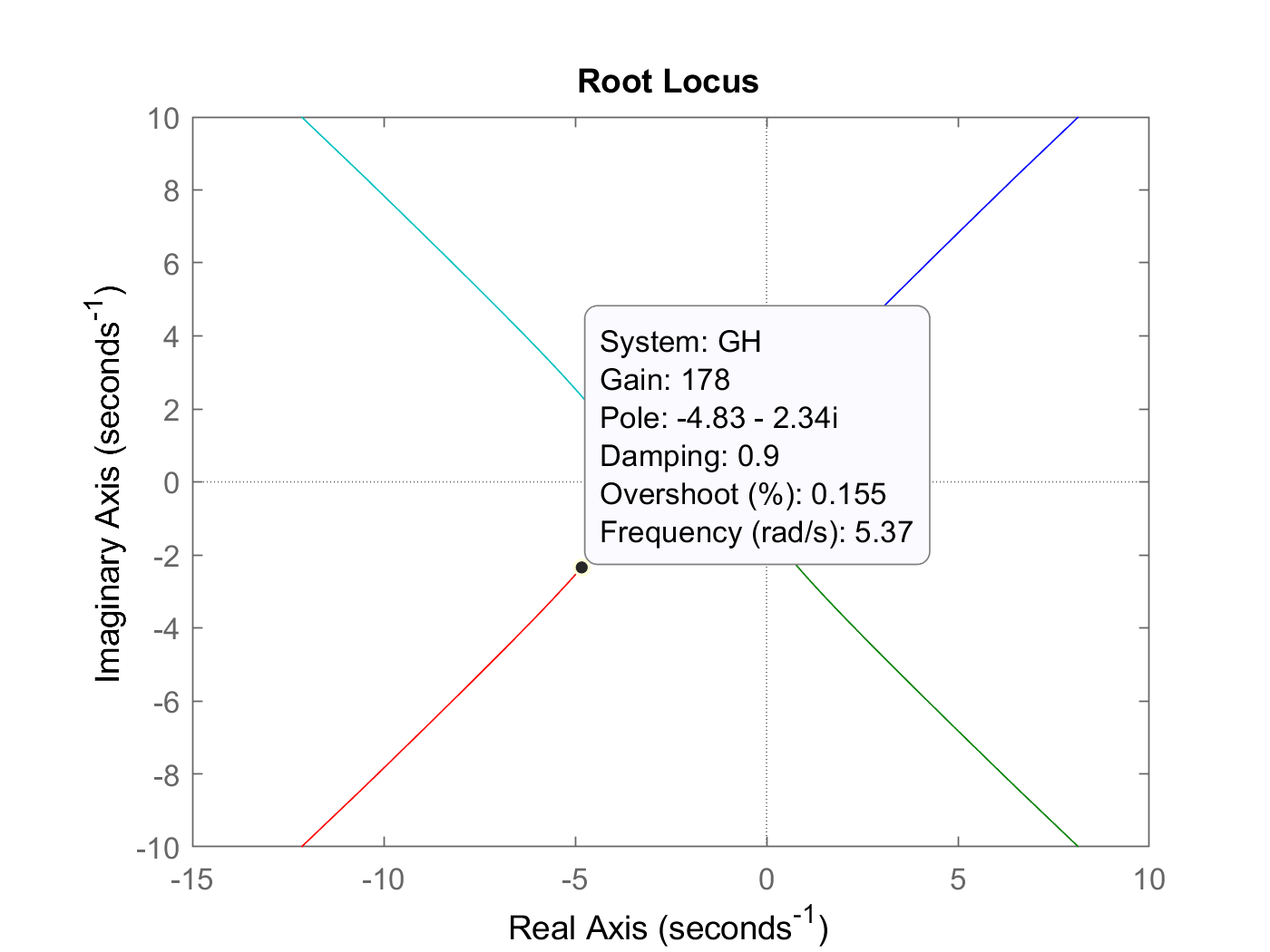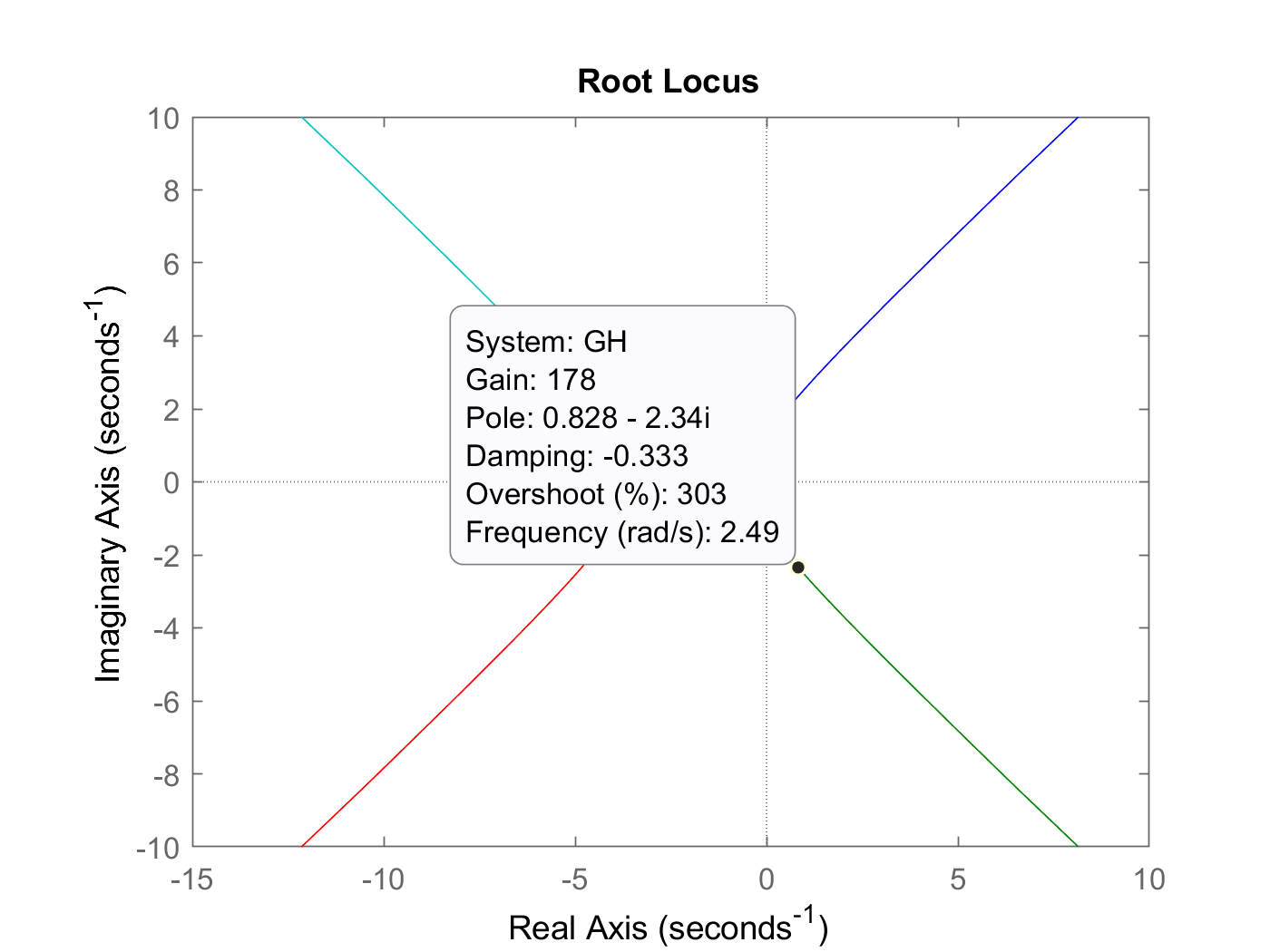So this is the system for which I have to draw a root locus if 'K' changes from 0 to infinity. The problem for me is that root locus is drawn for open loop transfer function but 'K' is in the feedback loop. I'm guessing that there is a way to get K in open loop transfer function but I've tried everything and just cant do it. I have no problems if K is in open loop tho. I appreciate any help.
3 Answers
No - the root locus is not drawn for the open-loop function.
It is the main purpose of the root locus of a system with feedback to show if resp. for which constant gain values the CLOSED-LOOP function will have poles in the "forbidden" region (right half of the s-plane). Hence, you have to find the poles of the function
H(s)=G(s)/[1+G(s)*H(s)] with G=1/(s+3)(s+4) and H=K(s(s+1).
That means, you have to find the zeroes of the denominator which gives the characteristic equation: 1+G(s)*H(s)=0
When you are working with root locus, you are making a figure about your characteristic equation behavior. So, the root locus of a negative-feedback loop is going to be the same at any point of the loop. Notice: the name 'characteristic equation' is just because of that. In your case, we have: characteristic equation = \$1 + \frac{1}{(s+3)(s+4)} \frac{K}{s(s+1)}\$ if K was in the open loop this will be the same.
-
\$\begingroup\$ Ah, thank you. Actually I did draw a root locus for that equation but I wasnt sure. I have another question in that case. What is the transfer function of open loop system in my example? \$\endgroup\$– IbncCommented Jan 16, 2019 at 23:18
-
\$\begingroup\$ Your transfer function of open loop is what relates your output to your input without the feedback. In your case it will be only Y(s)/Xr(s) = 1/((s+3)(s+4)). \$\endgroup\$– habp1992Commented Jan 16, 2019 at 23:31
-
\$\begingroup\$ I understand now everything, thank you. So just to summarize, we draw root locus for characteristic equation? So if C.E. is 1+G(s), we use poles from G(s)? \$\endgroup\$– IbncCommented Jan 17, 2019 at 0:00
-
\$\begingroup\$ Yes for your both questions. \$\endgroup\$– habp1992Commented Jan 17, 2019 at 0:28
-
\$\begingroup\$ Ibns....I think, the comment from Henrique A.B.P is NOT CORRECT. The so called "loop gain" - which is the total gain around the loop - is the product of all transfer functions witin the loop - including the minus sign at the summing node. \$\endgroup\$– LvWCommented Jan 17, 2019 at 10:36
In order to draw the root locus, you need to convert the open-loop system into the closed-loop system. You can do this
$$ \begin{align} T(s) &= \frac{ \frac{1}{(s+3)(s+4)} }{ 1+ \frac{1}{(s+3)(s+4)} \frac{K}{s(s+1)} } \\ &= \frac{s^2+s}{s^4+8s^3+19s^2+12s+K} \end{align} $$ Now the gain K appears in the characteristic equation of the closed-loop \$T(s)\$ (i.e the denominator). You can easily vary K from 0 to infinity to compute the poles of the characteristic equation of the closed-loop \$T(s)\$ using any software (e.g. Matlab). If the gain K is zero, we have these poles 0,-1,-3,-4. Use this Matlab script to compute the poles at different gains
K=0; % vary it from 0 to big number
poles = roots([1 8 19 12 K])
You just need tabular data to plot the root locus. You may use Matlab as well.
GH=zpk([],[0 -1 -3 -4],1);
sys=tf(GH);
rlocus(GH)
Or this elegant code
s=tf('s');
G = 1/((s+3)*(s+4));
H = 1/(s*(s+1));
sys = G*H;
rlocus(sys)
Let's go back to roots([1 8 19 12 K]) if K is 178, we have these poles
-4.8276 + 2.3442i
-4.8276 - 2.3442i
0.8276 + 2.3442i
0.8276 - 2.3442i
We can see same result in the root locus obtained by Matlab at this gain,

